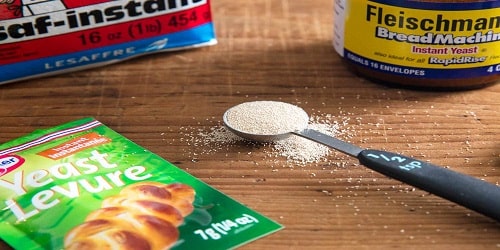The common denominator of those who make homemade bread and those who make cakes and tarts is the use of elements that fatten the dough. We must keep in mind that yeast and chemical boosters are not the same so as not to spoil our effort.
The effects produced by royal yeast and the chemical booster are different and are oriented toward a type of cuisine. First of all, it is convenient to keep in mind that the Royal envelopes so characteristic of any supermarket are not yeast, but impellers. This feature is key for its subsequent use.
The propeller, such as Royal, is a chemical compound that helps a dough rise, always during the baking process. Our mixture will not increase in size before, because the chemical elements do not cause any fermentation, but act as gasifiers that release carbon dioxide bubbles with heat to fatten the dough.
The impeller is recommended for baking; yeast, for doughs that are previously baked
For this reason, it is especially suitable for desserts related to baking. Biscuits, cakes, and pastries are made with an initial dough that does not require rest and should be made to rise during baking. It is also ideal for batters and tortillas.
Yeast
Yeast, on the other hand, has a different composition. Although it may be somewhat shocking, it is an organic cultivation of fungi whose main potential is to ferment the sugars in the flour, with an increase in the size of the dough as a consequence.
Types of yeast
There are several types of yeast, but the most common is to find it in fresh format and in dry presentation.
1. Fresh yeast is usually sold in bakeries, which keep it at a temperature of between 3 and 8 degrees. The main drawback is that it has a very short shelf life, as it is a natural product.
2. Dry yeast, for its part, has a longer shelf life because it is the result of removing the water from the fresh yeast and converting the product into a granulated powder that is better preserved.
However, it must be kept in mind that in both cases it is a set of living organisms. This detail is essential because if we subject it to temperatures above 45 degrees, the organisms die and the dough does not grow.
The main uses of yeast are directed to doughs that have to rise prior to baking. This group includes breads of all kinds, milk buns or roscones. With this simple differentiation, we will get dishes and desserts at their right point with an ideal presentation.
